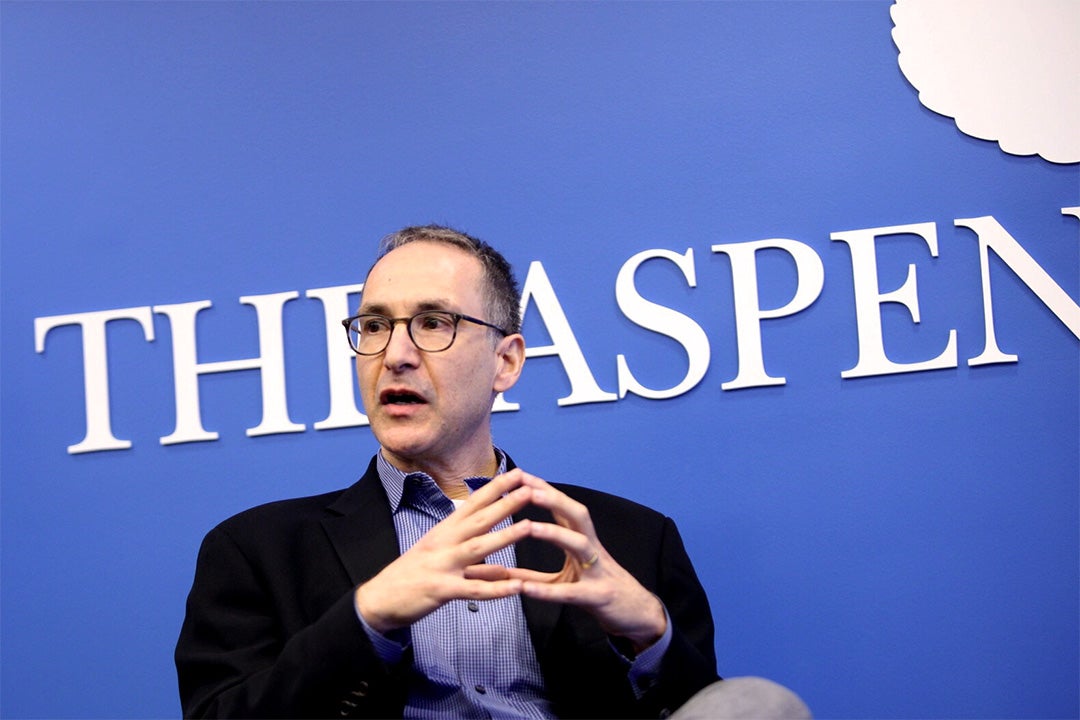Conversations around health care in the US often revolve around doctors, hospitals, and the rising cost of insurance. Lost in these exchanges is the importance of the long-term care industry. As the population ages, direct care workers such as home care aides and certified nursing assistants are becoming essential to more families in the US. Census estimates indicate that by 2050, the population aged 65 and over will be almost double what it was in 2012. 70 percent of that population will require long-term care.
The rising number of clients is just one challenge faced by the long-term care industry. Its workforce is marked by low levels of training, poor earnings, and high turnover rates. To address these mounting concerns, the Aspen Institute Economic Opportunities Program and Health, Medicine and Society Program gathered a panel of experts on the long-term care industry. This latest conversation in the Working in America series was moderated by Alison Kodjak, health policy correspondent for NPR.
Paul Osterman, co-director of the MIT Sloan Institute for Work and Employment, opened the discussion by sharing insights from his new book, Who Will Care for Us?. “Long-term care is a challenge because it’s confusing, expensive, and because the costs and need for it are going to explode as people get older and retire,” Osterman said. He explained that, despite their recent inclusion in minimum wage and overtime protections, many of the 2 million home care workers live at or below the poverty line. The workforce is dominated by women, disproportionately immigrants and women of color, who care deeply about their jobs but receive little to no training.
Adria Powell aims to change that. Joining Osterman for the panel discussion, she explained that as president of Cooperative Home Care Associates she has advocated on behalf of her organization’s workers by investing in their career development and supporting their efforts to earn higher wages. Given the reimbursement rates for long-term care services authorized through Medicaid and Medicare, making investments in home care workers is extraordinarily challenging. Nevertheless, CHCA provides worker training and uses peer mentors to help new home care workers adjust to the demands of their jobs. They also provide them with opportunities for career advancement. Powell believes that we must reframe the narrative around home care workers. Too often they are seen as companions. “We always push to see that the home care worker is included as part of the health care team,” she said. “That home care worker probably spends more time with the patient than anyone else.”
Judy Feder, a professor of public policy at Georgetown added that home care is often provided by family members who are not considered part of the health care team. Many families employ this form of uncompensated care because long-term care is generally not covered by Medicare or most traditional insurance plans. While long-term care insurance is available, these policies have not gotten much traction. Providing more coverage for long-term care, including home health care, would reduce the number of people being sent to nursing homes, allowing more people to remain at home. As a growing number of Americans age, the need for better quality care and coverage for long-term care will continue to increase. We need to make a stronger argument for quality care at home, Feder said.
Investing in both the home care industry and its workers is beneficial for the country as a whole. It will improve care, provide much-needed coverage, and produce higher quality jobs. While the discussion focused on workers, Osterman noted that it is in the interest of health care experts to begin arguing about benefits to payers. “Yes, quality of care is fundamental,” he said. “But Medicaid agencies and governor’s offices are where the power is.”


